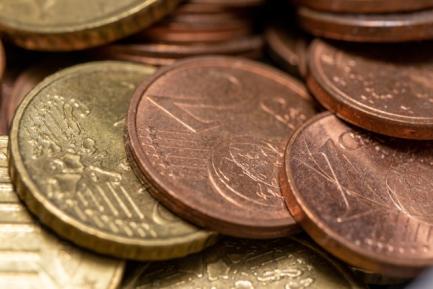
Notable reduction in Spanish household savings in 2022: deep dive
The saving capacity of Spanish households reduced significantly in 2022, it has been very rapid because of the inflationary context.
The savings rate falls to close to pre-pandemic levels amidst the inflation rally
The saving capacity of Spanish households reduced significantly in 2022 – a trend accelerated by the inflation rally. The savings rate fell to close to pre-pandemic levels, after two years well above normal due to the restrictions imposed during the pandemic. Specifically, the 2022 savings rate was 7.2% of gross disposable income (GDI), well below the 2020-2021 average (15.6%) and slightly above the 2015-2019 average (6.7%). This amounts to 58.5 billion euros in gross savings, which is 50 billion less than in 2021 but 8.5 billion more than the average for 2015-2019. In other words: while it is true that the savings rate has fallen sharply compared to 2021, to some degree this is merely a return to normality after two years of exceptionally high levels due to the pandemic; however, rather than this shift occurring gradually, it has been very rapid because of the inflationary context.


Last year’s drop in the savings rate reflects the fact that nominal consumption increased far more than GDI did (11.6% vs. 3.6%, respectively). The growth rate of GDI fell somewhat short of expectations, considering the significant growth in employee wages (6.5% year-on-year) driven by strong job creation, as well as the rapid recovery in net asset incomes (20%) resulting from the growth of dividend incomes more than offsetting the rise in interest payments at an aggregate level. This buoyancy was moderated by the increase in tax payments and the fall in social benefits (see third chart with the breakdown).

As for this year, we expect the savings rate to fall once again, albeit by much less than in 2022: household consumption in nominal terms will grow less than in 2022, both due to the slowdown in the economy and due to inflation, which will remain high, albeit moderating significantly compared to the 8.4% registered in 2022. In the case of GDI, we project that it will grow somewhat quicker than in 2022, a few percentage points below the growth of nominal consumption but showing signs of resilience: the strength of the labour market will be the key to counteracting the rise in interest payments due to the rate hikes. Thus, the savings rate in 2023 could be slightly above 6.0%.
Household financial assets decline as a percentage of GDP
In line with the lower accumulated savings last year, households’ net acquisition of financial assets also fell, bringing it to 44,982 million euros compared to 76,356 million the previous year; however, this figure still far exceeded pre-pandemic levels (average of 18,655 million in 2015-2019). Households acquired assets mainly by increasing their bank deposits (+46,448 million versus 18,898 million on average in 2015-2019);1 in contrast, they reduced their holdings in insurance policies and pension funds (–7,836 million), as well as in investment funds (IFs) and equities (–3,730 million).2
- 1To a lesser extent they also acquired other assets, notably commercial loans and other receivables (9,000 million), and debt securities (3,602 million); in the latter case, this acquisition was offset by the loss of the assets’ value (–3,399 million) due to the rise in long-term interest rates.
- 2Insurance and pension fund holdings also suffered a sharp loss in value (–47,462 million); in contrast, the value of equities and IFs rose by 5,133 million.

The acquisition of assets was neutralised by the sharp drop in their valuations (–45,447 million euros), such that the stock of gross household financial assets fell slightly, by 1,281 million euros, to 2.726 trillion;3 this amount is equivalent to 205.4% of GDP, well below the figure for 2021 (226% of GDP).

As for the structure of this wealth, it remains dominated by equities and IFs, which stabilised at 44.7% of the total; these were followed by bank deposits, which gained prominence and grew to represent 37.4% of the total, 2 points more than the previous year and the highest percentage since 2013. On the other hand, the portion corresponding to insurance and pension funds has fallen to its lowest since 1998 (12.2% of the total, 2 points less than in 2021).

Compared to the pre-pandemic situation in 2019, gross household financial wealth has increased by 281,300 million euros, largely driven by the significant savings accumulated during the pandemic.4 This figure may seem high, but we have to bear in mind that we are in an inflationary context in which the rise in prices has eroded the value of assets in real terms. In particular, cumulative inflation between the end of 2019 and 2022 was 12.0%, exceeding the growth in the stock of financial assets (+11.5%).
On the other hand, households continued to deleverage in 2022, and at the end of the year household debt stood at 53.0% of GDP; this is a lower figure than in 2021 (58.4%), influenced by a denominator effect due to GDP growth in 2022, and it is also the lowest ratio since 2002. In 2022 as a whole, households took out bank loans amounting to 2,822 million euros, which is much less than in 2021 (6,807 million); in addition, there is a change of trend in the second half of 2022, in line with the rise in rates: in the first half, net borrowing amounted to 14,755 million, while in the second half there was net repayment of 11,900 million.
As a result of the fall in financial assets as a percentage of GDP in 2022, which was much greater than that of liabilities,5 there was a contraction in households’ net financial wealth of 15 points compared to 2021, bringing it to 147.6% of GDP; in any case, this significantly exceeds the ratio registered in 2019 (135.5%).
- 4See the Focus «Evolution of household financial assets in nominal and real terms in Spain» in the MR12/2022.
- 5Financial liabilities include the outstanding balance of bank loans, business loans and other amounts payable (interest accrued on loans, outstanding taxes and social security contributions).




